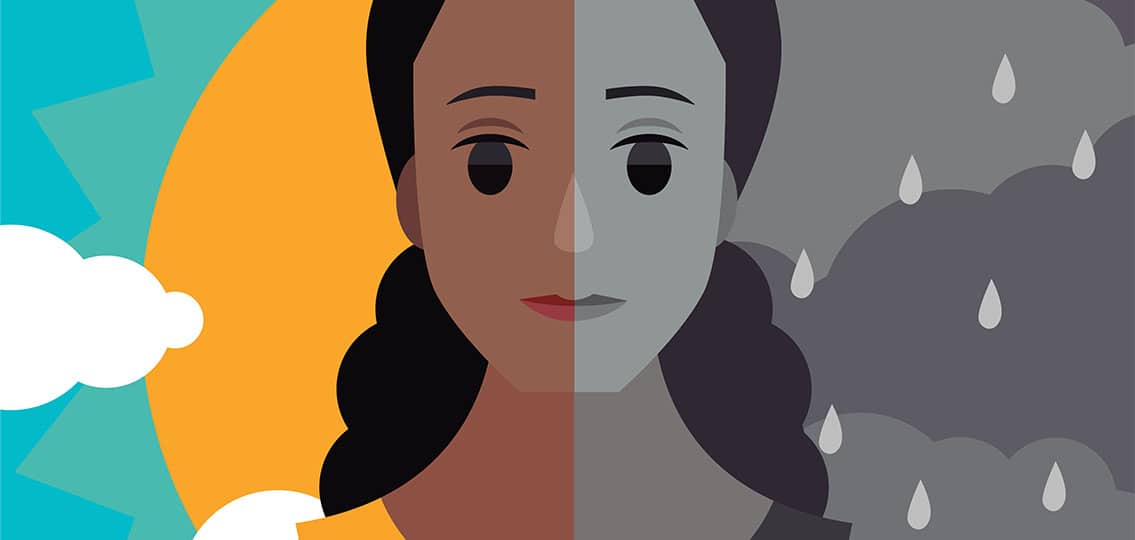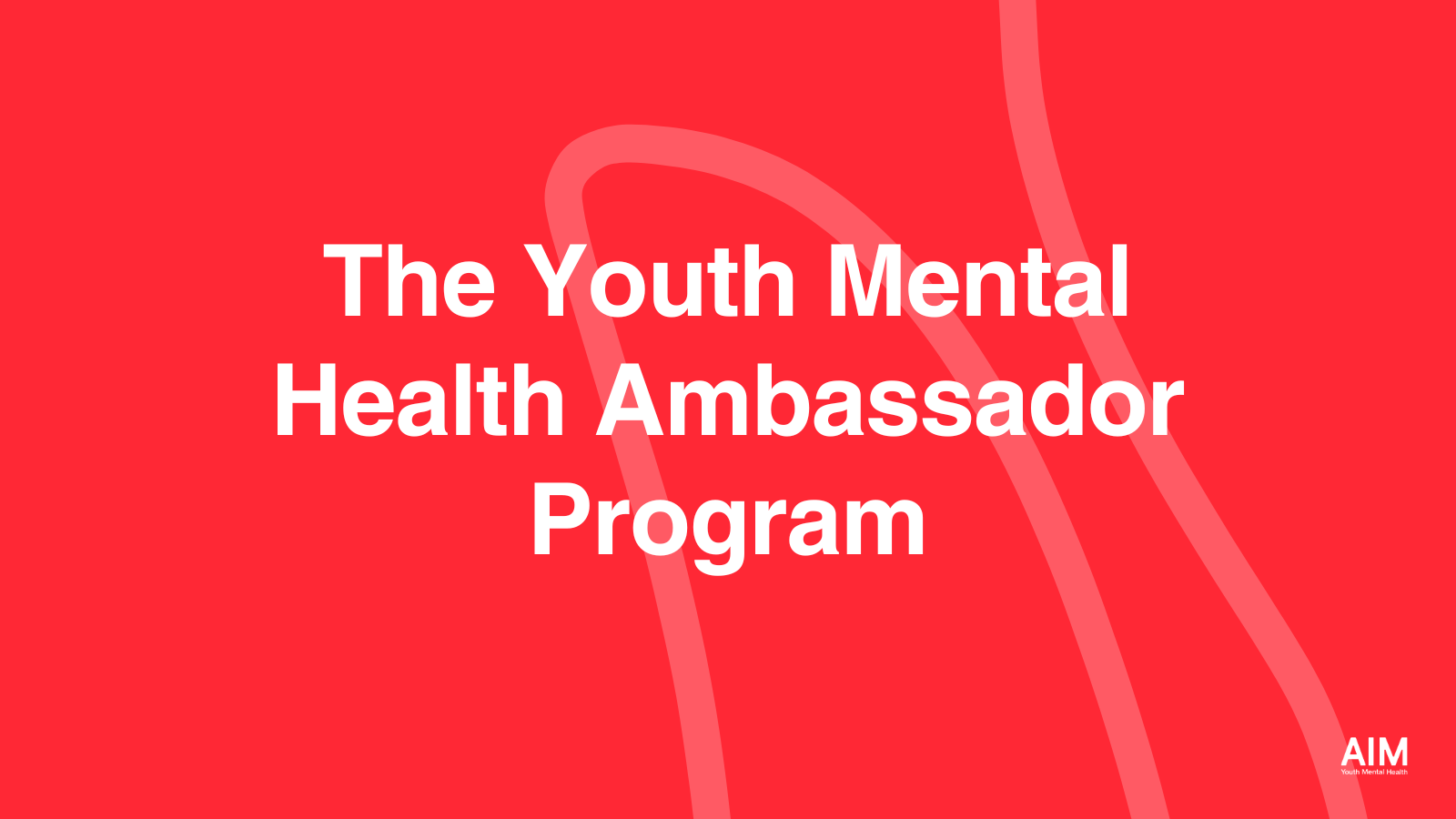One of AIM’s new Science Advisory Board members, Dr. Benjamin Goldstein, is spearheading cutting edge research on the connection between heart disease and bipolar disorders in teens.
By Jill Suttie
If you’re a parent of a teenager, you’ve probably noticed that they can have mood swings from time to time. It’s a normal part of being a teen, to have increased emotionality. But, what if they suddenly start staying up all night or becoming excessively energetic or grandiose? Or, what if they become so depressed they withdraw from friends and school work, or refuse to engage in activities they used to enjoy?
These could be early signs of bipolar disorder, a disease that affects around 2% of teens and involves extreme mood swings between mania and depression that interfere with everyday life. When it shows up at such a young age, bipolar disorder can have consequences beyond the teen years, not only becoming more severe in adulthood, but even leading to heart disease and early mortality.

How bipolar disease affects heart health is at the core of psychiatrist Benjamin Goldstein’s research at the Centre for Youth Bipolar Disorder. By collaborating with cardiologists, ophthalmologists, and other medical specialists, Goldstein hopes to identify the vascular causes of bipolar disorder, leverage that knowledge into new treatment approaches, and help remove some of the stigma attached to the condition. Already, his findings have spurred a call to action, which he coauthored, alerting the scientific community about the importance of furthering research around this important link.
I spoke with Goldstein about his research and what it means for teen mental health. Here is an edited version of our interview.
JS: What are the links between bipolar disorder and the heart that your research has uncovered?
BG: There are a number of ways that we can look at the heart/bipolar connection. One way is through traditional cardiovascular risk factors, such as high cholesterol and blood pressure or obesity. We’ve found that teenagers with bipolar disorder have higher rates of traditional cardiovascular risk factors, above and beyond what might be explained by their medications [like, anti-depressants]. We’ve also found that, in teens with bipolar disorder, higher cardiovascular risk factors like these are associated with smaller brain volume in certain regions of the brain and with lower functioning on cognitive tests.
Beyond traditional cardiovascular risk factors, we’re also interested in more novel vascular metrics—in particular, tiny blood vessels called micro vessels that exist throughout the body, are particularly relevant to the brain, and can be imaged in the eye. In one study, we had teens go into an MRI scanner to see how holding their breath affected those blood vessels, which usually dilate in response to a carbon dioxide build up, and found that teens with bipolar disorder had a blunted blood vessel reactivity in their brain, similar to what you see in adults with vascular brain injury. So, even in a group of teens, average age of just 16, we’re seeing very early indicators that tiny blood vessels of the brain are not adequately responding to physiologic demands in kids with bipolar disorder.
JS: Does this mean that bipolar disorder is caused by abnormal cardiovascular physiology or the other way around—that having bipolar disorder changes your physiology?
BG: Both are true. We know that the more episodes of depression and mania people have, the higher their cardiovascular risk. So, it’s clear that the physiological experience of these episodes has a negative effect on health.
But, as you point out, we believe that the arrow goes both ways, in the sense that heart disease and bipolar disorder may share common causes and come from the same mechanisms. While living with the symptoms of bipolar disorder can be very challenging and physiologically impactful, the upstream causes of bipolar disorder are, in part, blood vessel related, too.
JS: In one of your studies, you found that teens with bipolar disorder had increased levels of inflammation and a suppressed immune response just before they experienced extreme mood episodes. Why was that an important insight?
BG: As a clinician researcher, I’m really interested in moving towards a future where there’s something that we can integrate in the monitoring and assessment of bipolar disorder that goes beyond an interview. Right now, we only have interviewing and medical history to help guide us in anticipating the course of someone’s illness. We don’t know what’s going to happen to a given individual, because we don’t have any clear markers.
In most branches of medicine, you may do a physical examination and take a history, but you’re also going to use other tools that aid your ability to predict and individualize treatment approaches. That’s really lacking in psychiatry, in general, but particularly in bipolar disorder. So, the ultimate driving purpose of that type of study is to identify blood-based markers that are objective and readily measured, and can help us predict if someone will have a future episode in the months ahead.
JS: Does this suggest that anti-inflammatory medications might help prevent a manic or depressive episode for teens with bipolar disorder?
BG: Initially when we started doing this research, that’s the direction we thought things could go. But, so far studies done on anti-inflammatories and mood disorders haven’t returned results. It’s important to note, though, that some regular psychiatric medicines have anti-inflammatory properties. We currently know that these medicines work because they help people feel better. But, we don’t have certainty about the mechanisms through which they work. So, it may be that certain people benefit from those anti-inflammatory properties. I think there’s still more work that needs to be done to figure that out.
JS: You also found that teens with bipolar disorder have a problematic relationship with exercise. Can you explain what you discovered and how you use that to help patients?
BG: We found that the teens with bipolar disorder tended to feel more exhausted after finishing exercise than normal, healthy controls. And, those who felt the most exhausted were the ones whose brain blood flow became most normal. So, there’s a disconnect there. Something that makes them look better from a brain imaging perspective has them feeling worse.
The analogy that I use clinically [with patients] is that it’s like physiotherapy: If someone injures their knee and goes for physiotherapy, it could be an uncomfortable experience, but it’s in the service of healing and strengthening. We all tend to avoid things that make us uncomfortable; but it’s important with bipolar disorder to know that the feeling of exhaustion may be part of the process of getting better.
JS: Does your research suggest other ways of approaching treatment for bipolar disorder with teens?
BG: The idea of integrating physical health with mental health is super important. It should be front and center. But, we don’t yet have health systems that support that type of approach—at least not with bipolar disorder.
You do see that type of approach if a child or teenager has diabetes, where it’s not uncommon to be referred to a nutritionist, an exercise coach, and even a psychologist. But, we’re behind when it comes to mood disorders and bipolar disorder, where we don’t yet have that explicit integration. I’d like to see us move in that direction, because it has benefits across the board—for emotional health, physical health, and cognitive tasks, like attention and memory.
JS: Do you think that pointing out the relationship to heart health could encourage teens to seek treatment more readily?
BG: Yes, in a couple of ways. One is that not every type of treatment is for everybody. So, having another approach that focuses on physical health may appeal to some people more than therapy.
Second, for some people, the idea of bipolar disorder being an illness makes it feel more real and can cause less shame. For reasons that are unclear to me, there are some people who have doubts about the validity or bipolar disorder, especially in younger people. So, the idea of demonstrating the heart/bipolar connection makes it seem less different or unusual and more integrated into a general health approach. Our hope is that this will appeal to teens and their parents, making them feel more comfortable coming forward for treatment at the earliest stages.
JS: What have the teens themselves told you about your approach?
BG: A favorite part of my research is working with teens, who actively participate in our studies but also help shape the direction of our research. They see the potential for hope from research, in general, and from the heart/bipolar connection, in particular. It resonates with them.
I can think of one patient who, when I gave him his diagnosis and told him bipolar disorder is a medical condition, just like diabetes, told me that he initially dismissed that idea. He didn’t think it was real. But, when he participated in our study, and we did an ultrasound of his blood vessels and scanned his heart, he realized we really meant that. It was validating for him that someone had believed his illness was medically caused. I think it helped him feel less different and more confident in taking the treatments for the condition. Plus, it made him more confident managing conversations with doubting friends or relatives.
JS: Where do you want your research to go from here?
BG: I’d like us to keep on the track of establishing mechanistic links between blood vessels and bipolar disorder, because I think we have more work to do to demonstrate the validity, But, I’d also like to see physical health integrated into the treatment of bipolar disorder right from the gate and to develop and test models of care that are specifically tailored for individuals with unique needs.
For example, an exercise intervention design for the general population off the rack is not going to necessarily fit an individual with bipolar disorder, whose days are marked by anxiety, inattention, and anhedonia (which is difficulty experiencing pleasure). These are all barriers to participating and engaging in exercise. So, we have to have customized approaches that integrate individual level characteristics.
My hope is that we can maximize the chances of people being supported in living a heart-healthy lifestyle. I’d like to see that happening within my career.
______________________
About the Author
Jill Suttie, Psy.D., is a free-lance journalist and a staff writer and contributing editor for Greater Good, an award-winning online magazine published by the University of California’s Greater Good Science Center. A psychologist by training, her articles cover scientific research aimed at uncovering the keys to individual wellbeing and a more compassionate society. She also records music and has two CD’s of original songs that can be heard and purchased on her personal website: jillsuttie.com.





